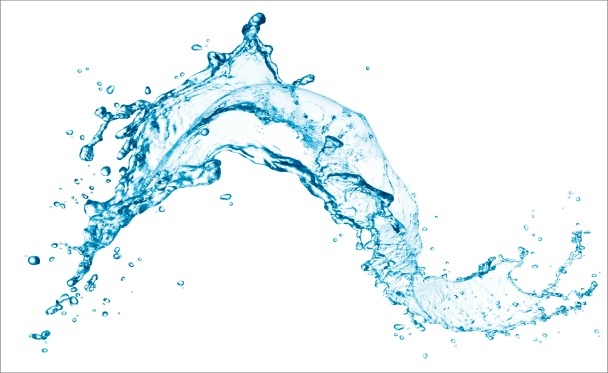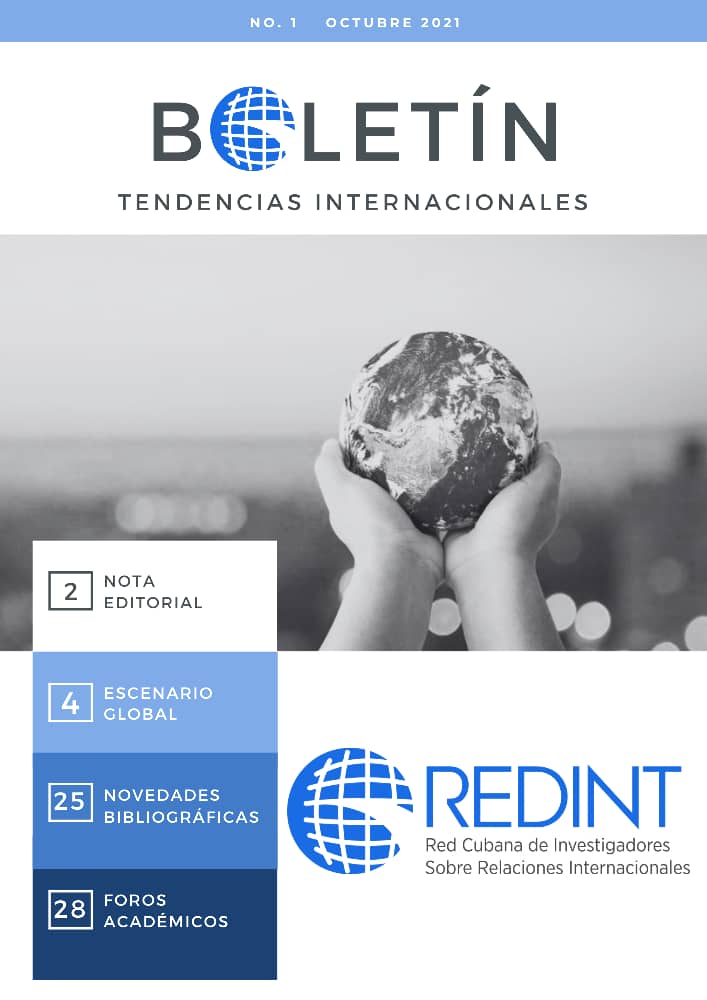The Importance of Water in Foreign Policy
Water is critical to all UN priorities, impacting development, human rights, peace and security, and the environment.
Conor M. Savoy is a senior fellow with the Project on Prosperity and Development at the Center for Strategic and International Studies (CSIS) in Washington
Janina Staguhn is a research assistant for the Project on Prosperity and Development at CSIS
Water is critical to all UN priorities, impacting development, human rights, peace and security, and the environment. Globally, one in four people lack safe drinking water and an estimated 50 percent of the world’s population does not have access to basic handwashing facilities. Addressing issues important to the water agenda will indirectly impact several other development priorities. Water can cause a significant national security concern through its impact on health, stability, prosperity, and resilience. In addition, its cross-sectoral nature makes it an integral part of not only the broader development agenda but also U.S. foreign policy in general.
The Biden administration has sought to restore U.S. leadership on global development issues. Within this larger objective, the administration has set priorities including focusing on competition with China and Russia, addressing climate challenges, and promoting inclusive development. Water has a significant role to play in addressing these priorities. In July, the G7 announced the Build Back Better World Partnership (B3W) as a response to China’s Belt and Road Initiative (BRI), of which water and sanitation infrastructure will be an important part. In addition to B3W, water will also play an important role in achieving goals set out in other administration strategies, including the Global Food Security Strategy and the Root Causes Strategy. If the administration wants to successfully address climate issues, it will also need to address the resulting water challenges and find ways to implement water into mitigation and adaptation strategies. Accessibility of water and water, sanitation, and hygiene (WASH) services impacts underserved and minority communities such as women and Indigenous groups, highlighting the importance of water in promoting another Biden administration priority, inclusive development. Finally, improvements in the water agenda will not be possible without adequate financing. In this realm, the Biden administration also can play to its strengths vis-à-vis China through digital payments and private sector investment. Infrastructure, climate, inclusive development, and finance are a few examples of where addressing water challenges can play a significant role in promoting the Biden administration’s foreign policy objectives.
Infrastructure
Infrastructure is a critical aspect of the water agenda and an important piece of the Biden administration’s foreign policy. Over the past decade, China has dramatically increased its infrastructure efforts around the globe, primarily through the BRI. In a tradeoff for areas where the United States has a competitive advantage such as private sector development, the United States has lessened its emphasis on building hard infrastructure, despite the capacity of agencies such as the U.S. Agency for International Development (USAID), the Millennium Challenge Corporation (MCC), and the Development Finance Corporation (DFC) to finance or directly support the development of infrastructure projects.
In response to growing competition with China, USAID should strategically utilize its capabilities to build reliable infrastructure that does not leave recipients in unmaintainable debt, which many of the BRI projects do. Infrastructure in the water space goes beyond large projects and includes smart water meters, which measure the amounts of consumption and monitor energy in real time. These could be significant in geographies such as the Middle East or sub-Saharan Africa, where they can help address water scarcity concerns by giving decisionmakers the data necessary to improve decisions around planning and allocation. This type of accuracy can also support sustainability and water recycling efforts around the world. USAID should also explore opportunities to provide soft infrastructure through technical assistance (TA), capacity building, and regulatory support to local governments, utility providers, and other service providers in the water sector. Additionally, a missing piece in conversations around building infrastructure for water is the maintenance of existing water systems. If something breaks down and is not addressed quickly it can lead to more harm than good by creating conflict between communities. USAID should also engage in capacity building to support the maintenance of existing infrastructure.
At the G7 summit in June, the White House announced the new B3W initiative, which seeks to combine the G7’s development finance tools to mobilize private sector capital and help address the $40 trillion infrastructure gap in developing countries, including water infrastructure challenges. These infrastructure projects will play an integral role in reaching the Sustainable Development Goals (SDGs), including SDG 6: Clean Water and Sanitation. The B3W initiative is intended in part as a response to China’s expansive BRI and is rooted in a common set of standards, which include a focus on good governance and climate. Poor governance, excessive regulation, and government corruption can increase transaction costs and disincentivize potential investments in water systems and infrastructure. Climate change, a priority of B3W, has detrimental impacts on water scarcity, security, sanitation, and agriculture, and thus is another aspect where the initiative overlaps with the water agenda and the Biden administration’s priorities.
Climate
The appointment of John Kerry as the first U.S. special presidential envoy for climate sent a clear message from the Biden administration that it considers climate a top administration priority. The 26th UN Climate Change Conference (COP26) saw a collective effort between developed countries to double their climate assistance by 2025, marking an important, although incomplete, commitment to addressing environmental challenges. These commitments demonstrated that climate is an area where countries such as the United States and China, which are usually in a more competitive stance, can cooperate. At COP26 an entire pavilion was dedicated exclusively to water, highlighting the centrality of water in both the impact of climate change on it, as well as its potential for solutions to the crisis and development. Climate change is significantly impacting weather patterns, which in turn exacerbates water scarcity issues. The impact of extended droughts on agriculture can lead to economic decline. Additionally, control over sources of water such as dams can create conflict. Water scarcity–induced economic decline and conflict both play a significant role in migration, with 10 percent of migration between 1970 and 2000 linked to water deficits.
However, water can also be part of the solution to climate change. Through various mitigation and adaptation measures, water can be an essential part of building climate resilience. According to NASA, mitigation is defined as “reducing climate change – involves reducing the flow of heat-trapping greenhouse gases into the atmosphere” and adaptation as “adapting to life in a changing climate – involves adjusting to actual or expected future climate.” Mitigation strategies are classified into two categories, nature-based or technology-driven. Adaptation measures can also be nature- or technology-based as well as through social and institutional measures. Water-related mitigation strategies, especially for fresh water, have additional benefits beyond protecting the environment, including stimulating job growth, reducing poverty, and promoting human health and gender equity.
Inclusive Development and Water
Inclusive development is another Biden administration priority, which concentrates on underserved and minority communities. Inaccessibility of water and WASH services has disproportionately impacted women and girls. In communities where the closest well or access point to water is not readily available, girls are often tasked with gathering water for their families. Women around the world spend 200 million hours per day collecting water. This time-consuming activity prevents girls from obtaining an education and earning an income. Moreover, unsafe access to latrines, lack of access to latrines, and unsafe routes to collect water make women vulnerable to sexual assault. Addressing access to water can directly improve the lives of women around the world in myriad ways including improving access to education and improvements in health. Women can also be an integral part of finding effective solutions in the water agenda. In the example of the U.S. President’s Emergency Plan for AIDS Relief (PEPFAR), a group of highly passionate and talented women revolutionized the role of women in advocacy. They are important connectors to their community and therefore can play an important role in the water space as well.
Accessibility to latrines and sources of water is not just an issue for women. Often infrastructure is developed without ensuring accessibility for people with disabilities. There are also instances where marginalized groups, including ethnic minorities and those discriminated against for their sexual orientation, are prevented from accessing WASH services. However, there are steps organizations can take to make WASH services more inclusive, including consulting with impacted populations, partnering with organizations that have expertise in this area, collecting and analyzing data, and ensuring that inclusivity is a formal aspect of designs.
Financing the Water Agenda
As is true with all development efforts, improvements in the water space are not possible without adequate financing. Despite an increased appreciation for the water agenda, signified by the passing of the Water for the Poor Act in 2005, the creation of the U.S. Global Water Strategy in 2017, and a significant earmark in the budget, there is still a gap in financing for water across the globe. In fiscal years 2018 and 2019, the first two years of implementation of the strategy, USAID provided $835 million for WASH services spread across 51 countries. In FY 2020, USAID was able to mobilize $216 million outside of U.S. taxpayer funding. In the United States, there are congressional champions on the hill, including Senators Ben Cardin and Tom Carper, the House Water and Sanitation Caucus, and a strong advocacy community, which could push for increased and strategic financing in the water space. The international community should look beyond traditional official developmental assistance (ODA) to creative technologies, domestic resource mobilization (DRM), and private finance that can help close the financing gap.
Utilizing digital payments to improve water systems will be an integral piece of this. As the name suggests, digital payments consist of payments utilizing any digital device including mobile phones, computers, mobile wireless data, or the Society for Worldwide Interbank Financial Telecommunication (SWIFT), and can include bank payments, mobile money, or payment cards. With 5.2 billion unique mobile subscriptions globally, digital payments in the developing world are becoming increasingly common among major utilities and will continue to dramatically improve access to financing. An example of this is Uganda’s National Water Sewage Corporation (NWSC), which saw a reduction of up to 75 percent in costs and an increase in revenue of 15 percent when it moved to an electronic water billing system. Overall, utilizing digital payments for large-scale utilities can improve collection efficiency, lower administrative costs, reduce optional costs, and improve the timeliness of payments.
Another important aspect of financing the water agenda is looking beyond ODA to national and local funders, especially from taxes. DRM is an avenue through which the government can collect taxes to fund water infrastructure. According to USAID, DRM is “the process through which countries raise and spend their own funds to provide for their people.” It is important to note that DRM does not necessarily mean higher or new taxes but that systems for tax collection are improved through simplification of the filing process or improved audits. DRM is a critical piece of the Biden administration’s emphasis on supporting local partners and can play an important role in financing water efforts on a national basis.
Private sector investment will be integral to financing the water agenda. In places like sub-Saharan Africa, the local private sector is playing an important role in filling the gap of conventional public service in the water sector. As part of its Private-Sector Engagement Policy, USAID agencies have myriad ways to support the growth of the private sector including information sharing, harnessing expertise, strengthening the enabling environment, and unlocking investment. USAID, DFC, MCC, and other agencies possess various capabilities to support small and medium-sized enterprises (SMEs) and micro, small, and medium-sized enterprises (MSMEs) that include soft loans and guarantees, equity, and technical assistance. USAID already has experience with these types of projects. In Haiti, its Water and Sanitation Project works to strengthen SMEs in their capacity to provide sanitation projects. These types of efforts should continue and grow.
Conclusion
The cross-cutting nature of water makes it an integral part of addressing not only priorities in the development space but also greater U.S. foreign policy objectives. Water plays a role in almost all of the Biden administration’s foreign policy objectives, including competition with China and climate. The United States should prioritize areas where it has a competitive advantage in the water space, including providing soft infrastructure, using creative technologies for climate mitigation measures and financing, supporting local and national actors, and promoting an inclusive approach to development.
Source: https://www.csis.org/analysis/importance-water-foreign-policy





Déjanos tu comentario